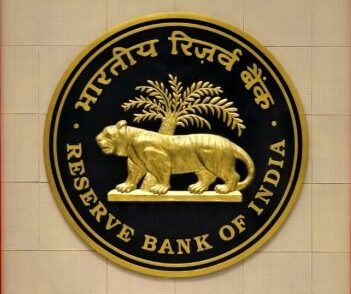First know about the Microeconomics And Macroeconomics
The father of economics Adam smith studied economics as ” an inquiry into the nature and causes of wealth of the nations”.
In more general terms, economics is the study about how individuals, businesses and governments make choices on allocating resources to satisfy their needs. These groups determine how the resources are organised and coordinated to achieve maximum output. They are mostly concerned with the production, distribution and consumption of goods and services.
Economics is divided into two important sections, which are: Macroeconomics & Microeconomics
Macroeconomics deals with the behaviour of the aggregate economy and Microeconomics focuses on individual consumers and businesses.
What is Microeconomics?
The term ‘Micro’ is used to indicate something related to specific area, rather a general one. Hence, the microeconomics studies the specific area of economics like individuals, a smaller group like labourers, economics of a firm etc.
In more detail, it is the study of decisions made by people and businesses regarding the allocation of resources and prices of goods and services. The government decides the regulation for taxes. Microeconomics focuses on the supply that determines the price level of the economy.
It uses the bottom-up strategy to analyse the economy. In other words, microeconomics tries to understand human’s choices and allocation of resources. It does not decide what are the changes taking place in the market, instead, it explains why there are changes happening in the market.
The key role of microeconomics is to examine how a company could maximise its production and capacity, so that it could lower the prices and compete in its industry. A lot of microeconomics information can be obtained from the financial statements.
The key factors of microeconomics are as follows:
- Demand, supply, and equilibrium
- Production theory
- Costs of production
- Labour economics
Examples: Individual demand, and price of a product.
What is Macroeconomics?
The term ‘Macro’ is used to denote something relating to a general area rather than being detailed or specific. The macroeconomics studies the nation as a whole.
Macroeconomics studies the substantial picture of an economy. It scrutinises itself with the economy at a massive scale, and several issues of an economy are considered. The issues confronted by an economy and the headway that it makes are measured and apprehended as a part and parcel of macroeconomics.
Macroeconomics studies the association between various countries regarding how the policies of one nation have an upshot on the other. It circumscribes within its scope, analysing the success and failure of the government strategies.
In macroeconomics, we normally survey the association of the nation’s total manufacture and the degree of employment with certain features like cost prices, wage rates, rates of interest, profits, etc., by concentrating on a single imaginary good and what happens to it.
The important concepts covered under macroeconomics are as follows:
- Capitalist nation
- Investment expenditure
- Revenue
Examples: Aggregate demand, and national income.
The following table will give clarity on the question as to what is microeconomics and what is macroeconomics.
| Issue considered | Is it Micro? | Is it Macro? |
| Quantity of Mango demanded in Delhi | Yes | No |
| Quantity of all products demanded by India | No | Yes |
| Quantity of Mango demanded by India | Yes | No |
| Price of Orange in Nagpur | Yes | No |
| Price of all products in India | No | Yes |
| Level of employment in Iron and Steel Industry | Yes | No |
| Level of employment in India | No | Yes |
List of Differences Between Microeconomics And Macroeconomics
| Microeconomics | Macroeconomics |
| Microeconomics is the branch of Economics that is related to the study of individual, household and firm’s behaviour in decision making and allocation of the resources. It comprises markets of goods and services and deals with economic issues. | Macroeconomics is the branch of Economics that deals with the study of the behaviour and performance of the economy in total. The most important factors studied in macroeconomics involve gross domestic product (GDP), unemployment, inflation and growth rate etc. |
| Microeconomics studies the particular market segment of the economy | Macroeconomics studies the whole economy, that covers several market segments |
| Microeconomics deals with various issues like demand, supply, factor pricing, product pricing, economic welfare, production, consumption, and more. | Macroeconomics deals with various issues like national income, distribution, employment, general price level, money, and more. |
| It is applied to internal issues. | It is applied to environmental and external issues. |
| It covers several issues like demand, supply, factor pricing, product pricing, economic welfare, production, consumption, and more. | It covers several issues like distribution, national income, employment, money, general price level, and more. |
| It is useful in regulating the prices of a product alongside the prices of factors of production (labour, land, entrepreneur, capital, and more) within the economy. | It perpetuates firmness in the broad price level, and solves the major issues of the economy like deflation, inflation, rising prices (reflation), unemployment, and poverty as a whole. |
| It is based on impractical presuppositions, i.e., in microeconomics, it is presumed that there is full employment in the community, which is not at all feasible. | It has been scrutinised that the misconception of composition’ incorporates, which sometimes fails to prove accurate because it is feasible that what is true for aggregate (comprehensive) may not be true for individuals as well. |
Frequently Asked Questions
What is the difference between macroeconomics and microeconomics?
Microeconomics is the study of economics at an individual, group, or company level. Whereas, macroeconomics is the study of a national economy as a whole. Microeconomics focuses on issues that affect individuals and companies. Macroeconomics focuses on issues that affect nations and the world economy.
What is the example of Microeconomics and Macroeconomics?
Unemployment, interest rates, inflation, GDP, all fall into Macroeconomics. Consumer equilibrium, individual income and savings are examples of microeconomics.
How do Microeconomics and Macroeconomics are interrelated?
Microeconomics and macroeconomics are interrelated as both the strategies focus on improving the economy of their certain fields and branches.
What are the two fields of Economics?
The field of economics is divided into microeconomics, i.e., the study of individual markets, and macroeconomics, i.e., the study of the economy as a whole.
Also refer :
- Top 50 Science MCQs For Competitive Exams
- Know About The Different Financial Sector Regulators In India








